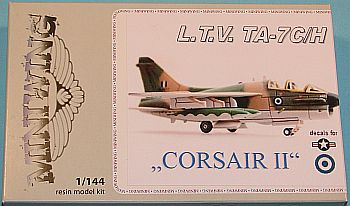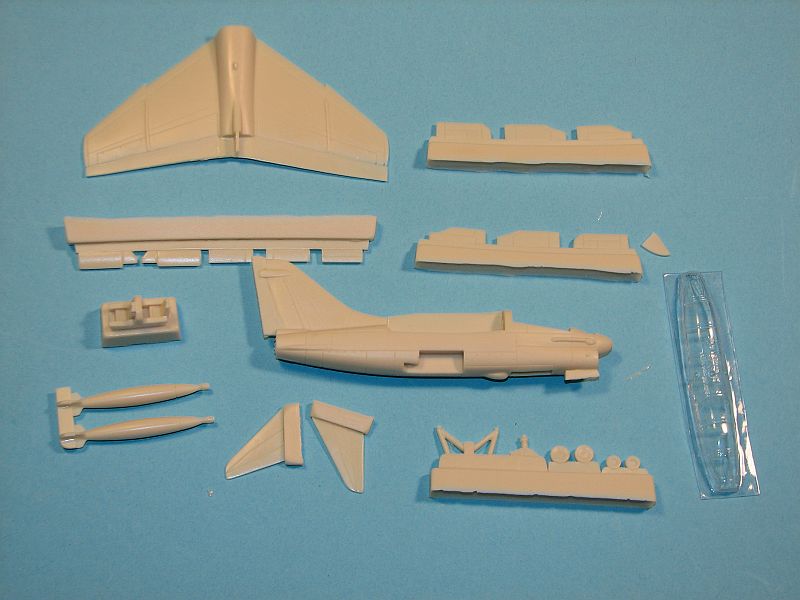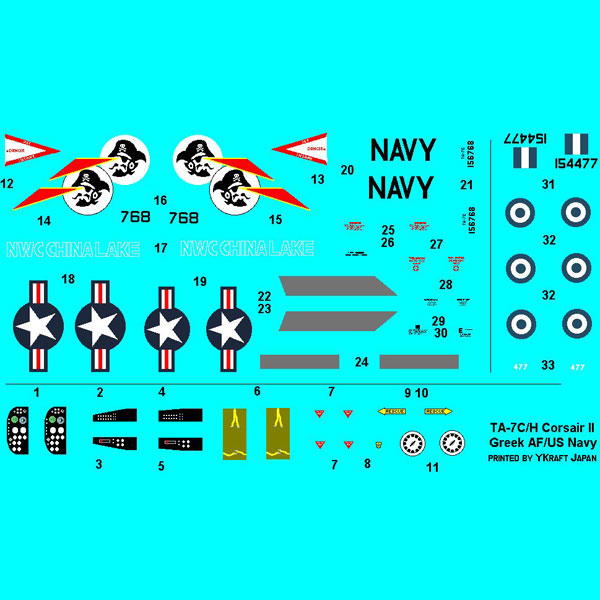
Miniwing 1/144 LTV TA-7C/H “Corsair II”
By Matt Bittner
The Kit
As a follow up to their A-7A, this release from Miniwing covers the two-seat Corsair II, in the guise of the TA-7C/H. Not sure, yet, what would be needed to make it an A-7K, but it’s probably not too much. There are 26 pieces of resin and, as is normal for Miniwing, two vac canopies, the second being a spare. The decals cover two schemes, a TA-7C of the US Navy (which appear to be from NWC China Lake); and a TA-7H of the Greek Air Force. The US Navy one is in the typical light gull gray over white, while the Greek aircraft is in Medium Green, Dark Green and Tan over Light Gray.
Again, as with all Miniwing kits, the decals are ALPS generated so care must be taken with handling and you’ll need to apply an overcoat as soon as they’re on the model for protection.
Not only is there a nice cockpit tub with ejection seats molded in-situ, but there are also decals representing the seat backs with belts, and instrument panels. When I installed these in the CF-105 they provided just that little extra interest to spice up the cockpit; perfect, if you’re keeping the canopy closed. Now that the cockpit tub has been painted, decals added and inserted into the one-piece fuselage, the rest of construction should be pain-free, at least when it comes to the main components. The one-piece wing is added next as are the horizontal tail pieces. There are underwing store braces as well as fuel tanks, but if you want any other stores, you’re on your own as the kit only comes with external fuel tanks. Gear doors will need to be cut apart if displaying the kit gear-down and the instructions show where the cuts should be made.The difficult areas will be where to add the underwing braces to. The instructions aren’t much help and there aren’t any indications on the wings’undersides. Personally, if I were to build it, I would build it “clean”.
Now there are two decals that aren’t called for in the instructions, decal numbers 11. I think (that being the key word) they’re to represent the wheel hubs. At least that’s what I think. Maybe Miniwing can clear this up.Conclusion
I don’t have very many adjectives left to describe Miniwing kits. There isn’t much to most kits, but what is there is first rate. Take your time cutting/sanding the pour blocks from the parts and you should end up with little to no seam work. The only thing I’m not sure about with the TA-7 is if it needs nose weight or not. I would think with a solid resin fuselage it wouldn’t, but it all depends on where the center of gravity is.
While not as “simple” as their Avia B-35, the Miniwing TA-7 doesn’t have many parts (but more than the Avia) and should be a quick build.
As I’ve stated in other articles in this issue, huge thanks to Miniwing for the review samples.


